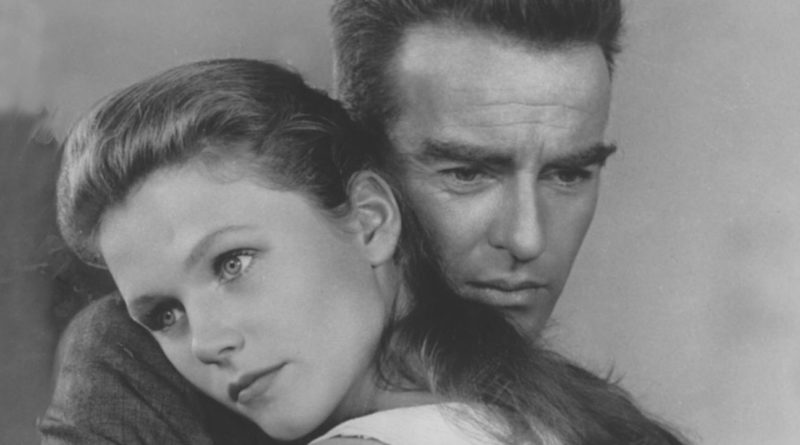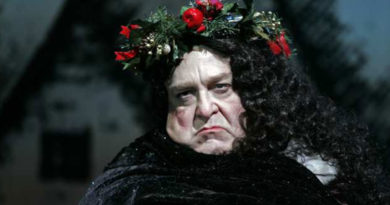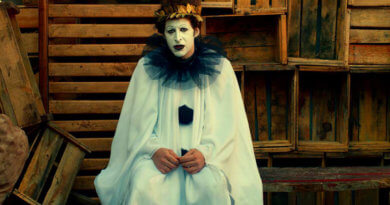Three legends from the Actors’ Studio
The Actors Studio, founded in New York in 1947, gave professional actors, directors and playwrights a place to work on Method acting, a technique developed by Constantin Stanislavski from 1911-15 and adapted by Lee Strasberg beginning in the 1950s. The list of Method actors is legendary, but today we’re giving the shout-out to three memorable stars who emerged from the Studio to make their mark in tragically short careers.

The inimitable Geraldine Page was a confirmed Method actor whose unbridled intensity enhanced the larger-than-life characters she frequently played. Onstage, she appeared in a legendary production of Tennessee Williams’s Summer and Smoke at Circle in the Square Theatre in Greenwich Village. She also worked with James Dean in The Immoralist in 1954 (ah, New York in the ’50s…what a great time that must’ve been).
In 1959, she famously co-starred with Paul Newman in Williams’s Sweet Bird of Youth, also appearing with him in the 1962 film version. In 1964, she played Olga in Chekhov’s Three Sisters, with Sandy Dennis playing the youngest sister Irina at one point in the run — but more about her later. Page played Mary Todd Lincoln in 1973 opposite Maya Angelou in the two-character Look Away. And she certainly must have made a great Mother Superior in the original Broadway run of Agnes of God in 1982, a production I would love to have seen.
Page’s style was unmistakable. Her voice was rather sing-songy; she could be twitchy; and, like Susan Tyrrell, she could project a stately beauty or coarsen her features as needed for a role. I first became aware of her via the ’70s Rod Serling series Night Gallery, and her two episodes — “Something in the Woodwork” and “Sins of the Fathers” — were unforgettable. Even as a kid, I thought, “Who is this bizarre woman with such a mannered acting style?”
An unusual role for her was playing a widowed mother opposite John Wayne in the 1953 3D Western Hondo. Casting a New York Method actor alongside “the Duke” is such a bizarre notion. But it wouldn’t be her only appearance with an action star. Far more fitting was her appearance in The Beguiled as the headmistresss of a girl’s school in the Antebellum South during the grueling last days of the Civil War. Clint Eastwood played a wounded Yankee soldier who’s taken in by Page and nursed to health while all the repressed women in the house become obsessed with him. Not a success upon its release, it’s actually one of my favorite Eastwood films because it’s so weird.
I first discovered Page’s performance as Sookie in Truman Capote’s 1966 A Christmas Memory when my local PBS station broadcast it in the 1980s. It’s become mandatory holiday viewing ever since. Made by future Mommie Dearest director Frank Perry for ABC, it featured Capote himself as narrator — and won Page an Emmy.
She did her time as a “horror hag” in Whatever Happened To Aunt Alice?, appearing with the equally bizarre Ruth Gordon, who actually played her role more-or-less straight. But as a down-on-her-luck widow who hires housekeepers for the sole purpose of killing them for their money, Page has a field day.
And, of course, her swan song as Carrie Watts in the film version of Horton Foote’s The Trip to Bountiful brought her the Academy Award she so richly deserved. And speaking of Method acting — this film and A Christmas Memory are the two Page works I’ve watched most frequently, and as Sookie, she writes left-handed, but as Mother Watts, she writes with her right hand! Now, that’s commitment to character. She was married to actor Rip Torn from 1963 until her death at 62 years of age.

In the 1960s, certain actresses were branded as “kooks” (Goldie Hawn being one of them) for their freewheeling acting style. Certainly one of the kookiest was Sandy Dennis, who most famously played Honey in the daring 1966 film version of Who’s Afraid of Virginia Woolf?, starring Elizabeth Taylor and Richard Burton. Long-faced, sharp-nosed, and possessing a mouthful of gigantic teeth, she was a twitcher, yet she had that elusive something that captivated audiences.
She was a young, idealistic teacher trying to aid troubled teens in an overcrowded New York high school in 1967’s Up the Down Staircase. Of course, later that year, another movie about a teacher — To Sir, With Love — blew this one out of the water, but I still remember it because of her. She played a (gasp!) lesbian in The Fox that same year, co-starring with 2001‘s Keir Dullea. Released just after the dissolution of the Production Code (brought on by Virginia Woolf!), it was originally rated R and featured frank scenes of nudity and sexuality.

Dennis was hilarious as Jack Lemmon’s wife in 1970’s The Out-of-Towners. As an Ohio couple visiting the Big Apple for the first time, they encounter every horror the big city can dish out, and her reactions to the ever-increasing indignities are a hoot.
And, of course, her Mona in Robert Altman’s 1982 film version of Come Back to the Five and Dime, Jimmy Dean, Jimmy Dean is priceless. And what co-stars — Cher, Karen Black and Kathy Bates? Weird movie nirvana! Cher even gets to make fun of Dennis’s quirkiness at one point: “I just don’t uh-uh-uh-understand h-h-how p-p-people can b-be so uh-uh-uh cruel!”
She played Stephen Geoffrey’s religious nut mother in 976-EVIL (1988), directed by Freddy Kreuger himself, Robert Englund. It’s very much a product of its time. A much stranger piece was Bob Balaban’s 1989 black comedy Parents, starring Randy Quaid and Mary Beth Hurt as a ’50s-style couple who also happen to be cannibals. Dennis plays the guidance counselor hoping to break through to the aforementioned parents’ son (Bryan Madorsky) who is understandably upset by what he thinks his folks may be up to. Playing like the bastard child of David Lynch and Samuel Fuller, this is a dark one.
Dennis’s final film performance was in The Indian Runner, Sean Penn’s directorial debut, in 1991. She died of cancer the following year at only 54 years of age. She lived with jazz musician Gerry Mulligan for over 10 years and with Eric Roberts (brother of Julia) from 1980-85.

Lee Remick‘s girl-next-door good looks made people forget about how truly subversive her career was. She played icy blondes, naive schoolgirls, victims and crusaders. She also possessed a fine singing voice and was pals with Stephen Sondheim.
She made her debut as Andy Griffith’s child bride in Elia Kazan’s excoriating A Face in the Crowd (also with the great Patricia Neal). In 1959, she played a rape victim in Otto Preminger’s Anatomy of a Murder, which featured rather racy language and subject matter for its time.
1962’s The Days of Wine and Roses, directed by Blake Edwards, co-starred Remick and Jack Lemmon as a young couple whose marriage is torn apart by alcohol. She starts out as a teetotalling secretary introduced to social drinking by Lemmon, finally ending up leaving him after he sobers up, saying she can’t live without alcohol because she can’t stand “how ugly everything looks.” Both actors give tremendous performances in this agonizing film.
She played the love interest of Rod Steiger’s serial killer in the 1968 dark comedy No Way to Treat a Lady, That same year, she played the wife of Frank Sinatra in The Detective, another “adult” film that tackled such themes as homosexuality in a graphic manner. In 1970, she participated in a film version of Joe Orton’s Loot, which remains rightfully obscure. In 1973, she played Julia in the American Film Theater adaptation of Edward Albee’s A Delicate Balance, starring Katharine Hepburn as the family matriarch.
On television, she played a crusading reporter who investigates the prostitution racket in New York in 1975’s Hustling. She was nominated for an Emmy playing doomed actress Margaret Sullivan in Haywire. And in keeping with her habit of doing stage work in other media, she appeared with Hal Linden in a 1982 television version of Tom Jones and Harvey Schmidt’s I Do! I Do!, which takes place entirely in bed.

Today, most people remember her as the wife of Gregory Peck’s Ambassador Thorn and unwitting mother of the Antichrist in 1976’s The Omen, which saw her toppling off of balconies and getting thrown out of a hospital window by that evil Billie Whitelaw.
Surprisingly, her only notable stage appearance was her Tony-nominated role as blind Suzy Hendrix in the Broadway run of Wait Until Dark, a role that would be taken by Audrey Hepburn in the film version. She appeared in Sondheim’s short-lived Anyone Can Whistle in 1964, and played Phyllis in a PBS concert adaptation of his Follies. She was set to play Desiree Armfelt in a Los Angeles theatrical production of A Little Night Music but sadly had to withdraw due to a relapse of the kidney cancer that took her life that same year. She was 55.





